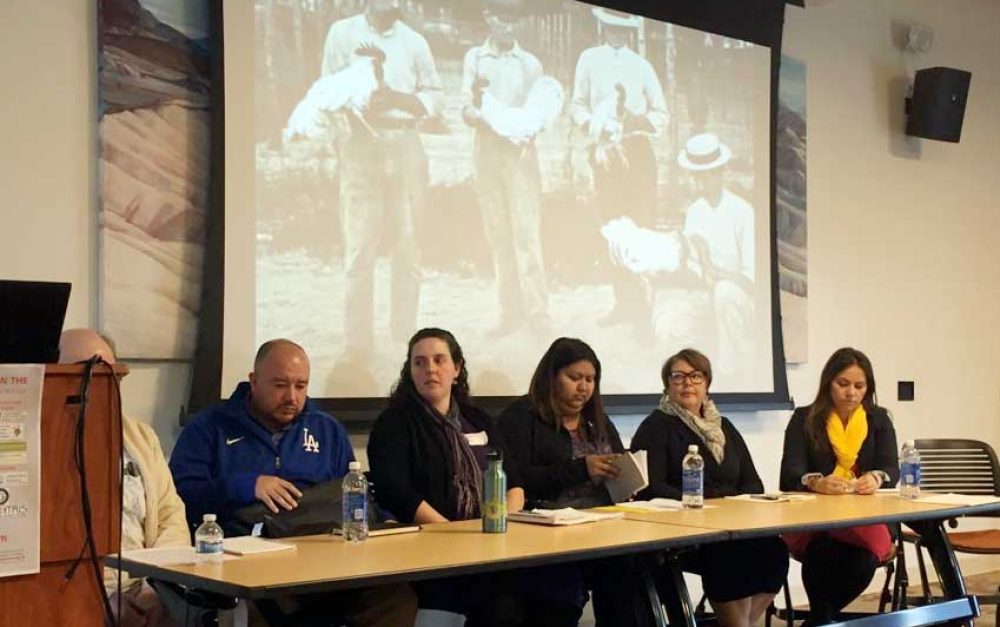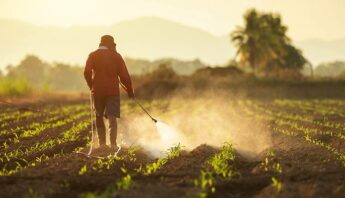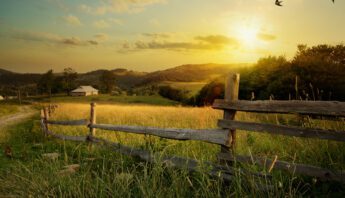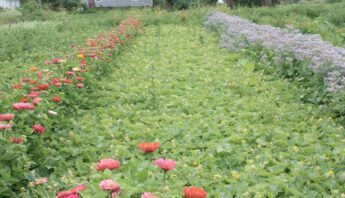There’s a lot of power in the San Joaquin Valley. It’s a hub for industrial agriculture interests, no doubt, as they’ve grown in size and scale. But there’s also power in the communities that are organizing to reclaim and protect shared water, soil and farmland.
That was the focus this week, as a group of academics, farmers, students, food and environmental justice advocates, and community organizers gathered at the University of California Merced for a “Rural Summit.” The entire day was grounded, as is the San Joaquin Valley, in the history of water and land laws. And, at the summit, the people who lived that history were able to share their stories.
Stacking the system
Under the 1902 Reclamation Act, farmers were encouraged to develop lands in the west, including California. In exchange, the federal government would help bring irrigation to these lands. To avoid land speculation, the federal government also limited farm size to 160 acres to receive water.
This lay the groundwork for the patterns of land use, cultural diversity and resource allocation we see today. In 1990, a federally funded study looked at the impacts of small- and large-scale agriculture in the Valley, as it considered an even larger water delivery project. The town of Arvin was (and is) surrounded by large-scale farm operations, while Dinuba was surrounded by smaller family-owned farms. The study highlighted the differences in cultural diversity in each of the towns, tracking the number of churches, restaurants, and more. The monocultures and biodiversity of the farms, respectively, translated to the towns. More farming diversity equated with more cultural diversity.
National Land for People (NLP), made up of largely Fresno area residents, challenged expansions and violations of the Act when no one else would. Several living members joined us in the room in Merced to share their experiences. In particular, they focused attention on the Westlands Water District that sprawls for 600,000 acres, or about 600,000 football fields, where a small number of landowners were abusing the water subsidy. Those looking to skirt water use restrictions created a scheme of placing farms in different families’ or friends’ names to maintain control of more land and water.
The community-based NLP took on those looking to abuse the system, even winning a lawsuit in the U.S. Supreme Court to force compliance with farm-size limits. And then those limits were dramatically extended under the Reagan Administration, from 160 to 960 acres — paving the way for even more monoculture in the Valley.
Power today
Unfortunately, communities are still fighting for power and resources. According to the San Joaquin Valley Sustainable Ag Collaborative, of the 25,000 farms in the Valley, 24 percent account for 94 percent of sales. At the gathering in Merced, at least one small-scale farmer remarked about how they’re increasingly pushed out by the large-scale growers.
And large-scale agricultural interests maintain power and control, in part, through a series of mandatory marketing orders (e.g. Strawberry Commission), voluntary trade associations (e.g. Western Growers) and cooperatives (e.g. Blue Diamond).
Land and water aren’t the only issues in the valley. Pesticide use has been critical in these larger operations too, allowing larger and larger monoculture operations. And, like the land itself, agricultural markets in the U.S. and around the world are largely controlled by a small handful of corporations. Market consolidation, corporate control, and diminished natural resources have too often left these family and small-scale farmers trapped.
Build the new
One community member speaking up at the Rural Summit framed the day as “fight the bad, build the new.” And there are plenty of good examples of building the new. The Fresno Food Commons is finding new ways to distribute fresh fruits and vegetables into the poorest parts of Fresno. Sun Mountain, founded by former NLP members in the Sierra Foothills, is a growing native and edible plants.
And, maybe even more important, the network of researchers, advocates and community leaders found a day to strengthen our network and resolve to build a fairer, democratic food system that includes rural California communities.








